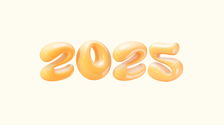There is a large number of people around the world who want to learn Arabic, but hesitate to start studying the language simply because they think that it’s too difficult to read!
Therefore, in this article, I will attempt to rectify this situation by helping you to start learning to read Arabic in three easy steps. However before we start, I want to clarify an important point known to many who are language teachers: that in any language, there is a difference between the name of a letter and the sounds that it makes. For example, the letter w in English is named “double u,” but when you pronounce it in words such as we or wing, the pronunciation is nothing like its name.
In Arabic, we have the same thing. We have the names of each letter in the Arabic alphabet, and then we have the sounds which each represents. In the first step, we will learn the Arabic alphabet. Then, in the second step, we will learn short and long vowels, which will help us to understand how to pronounce the sounds of each letter. Finally, in the third step, we will learn about some special marks that will help us with pronunciation (tanween, shadda, and sukoun).
The First Step: The Arabic Alphabet
We have 29 letters in the Arabic alphabet when hamza is included as a letter. Some Arabic scholars ignore hamza, and therefore only recognize 28 letters.
Please note that we read and write Arabic from right to left.
|
ج |
ث |
ت |
ب |
أ |
Arabic character |
|
jīm |
thā’ |
tā’ |
bā’ |
alif |
Letter name |
|
ر |
ذ |
د |
خ |
ح |
Arabic character |
|
râ’ |
dhāl |
dāl |
khâ’ |
ħā’ |
Letter name |
|
ض |
ص |
ش |
س |
ز |
Arabic character |
|
đâd |
ŝâd |
shīn |
sīn |
zāy |
Letter name |
|
ف |
غ |
ع |
ظ |
ط |
Arabic character |
|
fā’ |
ghayn |
ξayn |
zâ’ |
ŧâ’ |
Letter name |
|
ن |
م |
ل |
ك |
ق |
Arabic character |
|
nūn |
mīm |
lām |
kāf |
qâf |
Letter name |
|
ى |
ء |
و |
هـ |
Arabic character |
|
|
yā’ |
hamza |
wāw |
hā’ |
Letter name |
The Second Step: Short and Long Vowels in Arabic
While the Arabic alphabet consists of only 29 letters, each of these 29 can represent six different sounds depending on the short or long vowel that the letter carries.
Arabic has three short vowels:
Short Vowel #1: fat'ha ( ــــَ )
This sounds like a short u as in but, and it is written on top of the letter. For example:
- كَتَبَ ( kʌ, tʌ, bʌ )
- وَقَفَ ( wʌ, qʌ, fʌ )
- جَلَسَ ( jʌ, lʌ, sʌ )
- وَجَدَ ( wʌ, jʌ, dʌ )
Short Vowel #2: damma ( ـــُ )
This sounds like a short u as in look, and it is written on top of the letter. For example:
- طُرِدَ ( tʊ, rɪ, dʌ )
- فُهِمَ ( fʊ, hɪ, mʌ )
- صَلُحَ ( sʌ, lʊ, hʌ )
Short Vowel #3: kasra ( ــِ )
This sounds like a short i, as in with, and it is written below the letter. For example:
- شَرِبَ ( ʃʌ, rɪ, bʌ )
Watch this wonderful video to learn how to pronounce letters with short vowels.
Arabic also has three long vowels:
Long Vowel #1: Letter ( ا )
This is free of hamza ( ء ). It always comes after a letter with fat'ha (explained above) and sounds like the letter a in cat, bat, and rat. For example:
- ;كِتَاب ( qæ, tæ )
Long Vowel #2: Letter ( و )
This comes after a letter with dammah (explained above) and it sounds like the oo in moon. For example:
- يَزُور - يَلُوم
Long Vowel #3: Letter ( ى – يـ )
This comes after a letter with kasra (explained above) and it sounds like the ee in sheep. For example:
- كَثِير – وَادِى
The Third Step: Additional Marks that Help with Pronunciation
sukūn ( ْ )
Whenever a consonant does not have a vowel, it receives a mark called a sukūn, which looks like a small circle. It sits above the letter, and cannot be followed by a vowel. For example:
- يَلْعَب – يَجْرِى
To learn more, watch this video.
shadda ( ّ )
Shadda represents the doubling (or gemination) of a consonant. This is used when the same consonant occurs twice in a word with no vowel in between. In this case, instead of using consonant + sukūn + consonant, the consonant is written only once and shadda is written above it. For example:
- رَدَّ – الشَّمْس
To learn more, watch this video.
tanween ( ن )
When you see a double fat'ha ( ً ), a double dammah ( ٌ ), or a double kasrah ( ٍ ) written on top of the last letter in an Arabic word, you need to verbalize an extra noun ( ن ) after the last letter. This called tanween and it is found only with the last letter in Arabic nouns. For example:
- كِتَابٌ ketabun – فَصْلٍ faslen – وَرَقًا waraqan
Note that when tanween is used with a double fat'ha, we need to write an extra alif after the last letter, which is not pronounced.
To learn more, watch this video.
Some important notes:
The definite article ( ال )
The definite article ( ال ) is used to indicate nouns in the same way that “the” is used in English. The letter ( ل ) for this article has two types:
Type #1: اللام القمرية ( alla'm al-qamariyah )
This la'm is written and pronounced.
The features of this la'm are:
- You can find soukoun on top of this la'm ( الْ ).
- The next letter is free of shadda ( ّ ).
- It is followed by one of these fourteen letters:
|
Letter |
Example |
|
|
أ |
الْأب |
The father |
|
ب |
الْبقرة |
The cow |
|
غ |
الْغرفة |
The room |
|
ح |
الْحمار |
The donkey |
|
ج |
الْجمل |
The camel |
|
ك |
الْكلب |
The dog |
|
و |
الْوجه |
The face |
|
خ |
الْخشب |
The wood |
|
ف |
الْفصل |
The class |
|
ع |
الْعمل |
The work |
|
ق |
الْقمر |
The moon |
|
يـ |
الْيد |
The hand |
|
م |
الْمنزل |
The house |
|
هـ |
الْهاتف |
The phone |
Type #2: اللام الشمسية ( alla'm ashamsiya )
This la'm is written, but we don't pronounce it.
The features of this la'm are:
- It is free of sukoun.
- The next letter always carries a shadda.
- It is followed by one of these fourteen letters:
|
Letter |
Example |
|
|
ت |
التَّمْر |
The dates |
|
ث |
الثَّوْر |
The ox |
|
د |
الدَّم |
The blood |
|
ذ |
الذَّنب |
The guilt |
|
ر |
الرَّجُل |
The man |
|
ز |
الزِّيارة |
The visit |
|
س |
السَّمَاء |
The sky |
|
ش |
الشَّر |
The evil |
|
ص |
الصَّبَاح |
The morning |
|
ض |
الضَّعْيف |
The weak |
|
ط |
الطَّائِر |
The bird |
|
ظ |
الظَّريف |
The nice |
|
ل |
اللَّبن |
The milk |
|
ن |
النَّوْم |
The sleep |
- The closed ta' ( ـة – ة ) atta' al-marboota.
This letter is found at the end of nouns and not verbs. It can be pronounced in two ways:
- If it is voweled by fat'ha, dammah, or kasrah, it is pronounced like the open ta' ( ت ), such as in مدرسةُ ( mʌ, d, rʌ, sʌ, tʊ ) – إجابةَ ( eɪ, jʌ, bʌ, tʌ )
- If it carries sukoun (where we pronounce something and stop, causing any vowel sound following a consonant to become silent or causing a long vowel to become a short vowel), it is pronounced like the letter ( هـ ). This can be seen in the previous examples when we pronounce them and stop ( mʌ, d, rʌ, sʌh ) and ( eɪ, jʌ, bʌh ).
After reading this article, I believe that it should be easier for you to read Arabic. You just have to make the decision to start. I hope that now you know how to pronounce Arabic letters and will try to practice with these examples:
- سَمِعَ – مَكْتَبٌ – مَطَارٍ – فُصًولًا – حَسِبَ – شُكْرًا – رَدَّ – شِتَاءٌ – يَعُضُّ
Image Sources
Hero Image by Ahmed Bin-Baz (CC BY 2.0)







